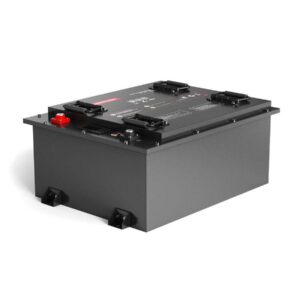
How much are car batteries now?
The current cost of electric vehicle (EV) battery systems ranges from ¥30,000 to ¥200,000+, depending on capacity, chemistry, and vehicle class. Entry-level EVs like the Wuling Hongguang Mini EV require ¥20,000–¥40,000 for a 10–20kWh pack, while premium models like the Tesla Model S Plaid with a 100kWh battery may exceed ¥150,000. Lithium iron phosphate (LiFePO4) batteries typically cost 15–20% less than nickel-cobalt-aluminum (NCA) equivalents. Pro Tip: Always verify warranty coverage—most manufacturers offer 8-year/160,000-km protection against capacity degradation below 70%.
How to Safely Dispose of and Recycle Car Batteries
What factors determine EV battery pricing?
Key cost drivers include energy density (Wh/kg), thermal management systems, and cell format. Prismatic cells add 8–12% cost over pouch designs but improve durability. High-nickel cathodes like NMC811 increase material costs by 18–25% versus standard NMC622.

Battery prices follow a nonlinear curve—a 75kWh pack costs 2.3× more than a 32kWh unit, not double. This stems from complex BMS requirements and cooling infrastructure scaling. For example, BYD’s Blade Battery (LiFePO4) achieves ¥0.95/Wh for 100kWh systems due to structural pack integration. Transitioning to solid-state designs could slash costs 40% by 2030. Pro Tip: Opt for modular battery systems—they allow partial replacements, saving 35–60% versus full-pack swaps.
| Chemistry | Cost (¥/kWh) | Cycle Life |
|---|---|---|
| LiFePO4 | 600–800 | 3,500+ |
| NMC 622 | 850–1,100 | 2,000 |
| Solid-State (prototype) | 2,400+ | 10,000* |
How do luxury vs. economy EVs compare?
Premium EVs allocate 34–38% of vehicle cost to batteries versus 45–50% in budget models. A NIO ET7’s 150kWh semi-solid-state battery costs ¥214,500 (¥1,430/kWh), while the Ora Good Cat’s 47.8kWh pack runs ¥49,000 (¥1,025/kWh).
This discrepancy arises from advanced thermal systems in luxury EVs—liquid-cooled packs add ¥120–180/kWh versus passive cooling. Moreover, Tesla’s 4680 cell integration reduces structural costs by ¥9,000/pack through cell-to-chassis designs. Practically speaking, mid-range EVs offer the best ¥/km value, with BYD Seal’s 61.4kWh battery delivering 550km range for ¥85,000. Warning: Avoid aftermarket “discount” batteries—non-OEM cells often lack UL certification, risking thermal runaway above 45°C.
Battery Expert Insight
FAQs
Are battery replacements covered under warranty?
Most manufacturers cover defects and ≥70% capacity retention for 8 years/160,000km. Degradation below 70% within this period qualifies for prorated replacements.
Can I upgrade my EV’s battery capacity?
Only with OEM-approved kits—aftermarket capacity boosts often void warranties and may overload existing thermal management systems.
How often do EV batteries need replacement?
LiFePO4 packs typically last 3,500+ cycles (10–12 years), while NMC averages 2,000 cycles (8–10 years). Most outlive the vehicle chassis with proper 20–80% charge discipline.
